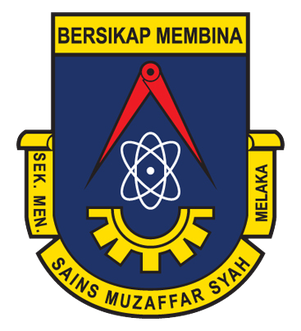
The University of Malaya is a public research university located in Kuala Lumpur, Malaysia. It is the oldest and highest ranking Malaysian institution of higher education, and was the only university in newly independent Malaya. The university has graduated five prime ministers of Malaysia, and other political, business, and cultural figures of national prominence.

The National University of Malaysia is a public research university located in Bandar Baru Bangi, Hulu Langat District, Selangor, Malaysia. Its teaching hospital, Universiti Kebangsaan Malaysia Medical Centre (UKMMC), is located in Cheras and also has a branch campus in Kuala Lumpur.

Bandar Baru Bangi is a township and satellite town of Kajang situated in Hulu Langat District, in southeastern Selangor, Malaysia.
The Master of Public Health(MPH), Master of Science in Public Health (MSPH), Master of Medical Science in Public Health (MMSPH) and the Doctor of Public Health (DrPH), International Masters for Health Leadership (IMHL) are interdisciplinary professional degrees awarded for studies in areas related to public health. The MPH degree focuses on public health practice, as opposed to research or teaching. Master of Public Health programs are available throughout the world in Schools of Public Health, Programs in Public Health, Medical Schools, and Schools of Public Affairs. MPH degrees, in addition to including a core curriculum, will usually also let students pursue a specialization in a specific field, such as epidemiology, biostatistics, or health management.
Bandar Tun Razak is a township and parliamentary constituency in Kuala Lumpur, Malaysia. It is named after the second Prime Minister of Malaysia, Tun Abdul Razak.

Bandar Tasik Selatan is a township in Sungai Besi, Kuala Lumpur, Malaysia. It was established in 1991.
Dr. Lo' Lo' binti Mohd Ghazali was a Malaysian politician. She served as the Member of Parliament for the Titiwangsa constituency in Kuala Lumpur, Malaysia from 2008 until her death in 2011. Lo' Lo' was a career physician who was elected to the central committee of the Pan-Malaysian Islamic Party (PAS) in 2001.

Sekolah Menengah Sains Muzaffar Syah is the first science school in the state of Malacca, Malaysia. It was established in 1973 under the Second Malaysia Plan as the first boarding school in the state. The school was built on the top of a hilly area in Ayer Keroh, at 121.9 meters above sea level and in an area encompassing 12.9 hectare. Its buildings were completed in 1976 and officiated in 1983 as Sekolah Menengah Sains Melaka, later renamed Sekolah Muzaffar Syah Melaka after the fourth Sultan of the Malacca Sultanate. In 2010, the school received the High Performance School award. The school is specialised in green technology, agriculture, robotics and electronics. The school were also an adopted school for Multimedia University.
Tuanku Aishah Rohani binti Almarhum Tengku Besar Mahmud is the current Tunku Ampuan Besar of Negeri Sembilan. She is the wife of the current Yang di-Pertuan Besar of Negeri Sembilan, Tuanku Muhriz ibni Almarhum Tuanku Munawir.
Tunku Ali Redhauddin ibni Tuanku Muhriz is the eldest son of the reigning Yang di-Pertuan Besar of Negeri Sembilan Tuanku Muhriz ibni Almarhum Tuanku Munawir and the Tunku Ampuan Besar of Negeri Sembilan, Tuanku Aishah Rohani binti Almarhum Tengku Besar Mahmud.

Kuala Lumpur Hospital is the largest Malaysian government-owned public hospital and higher specialised hospital in Kuala Lumpur, the capital city of Malaysia Kuala Lumpur Hospital opened in 1870, HKL is a not-for-profit institution and serves as the flagship hospital of the Malaysian public healthcare system. This hospital serves as a tertiary and referral hospital. It is located on 150 acres of prime land in the city with 84 wards and 2,300 beds, making it one of the largest hospitals in the world. More than 90 per cent of the beds in HKL are allocated for subsidized patients, providing access to an internationally established standard of affordable healthcare.

The Cochrane station is a Mass Rapid Transit (MRT) underground station in Kuala Lumpur, Malaysia, on the MRT Kajang Line. The station was opened on 17 July 2017 as part of the second phase operations of the line.
Tun Ahmad Sarji bin Abdul Hamid was a Malaysian civil servant who served as the 9th Chief Secretary to the Government from 1990 to 1996.

The UPM MRT station is a mass rapid transit (MRT) station at Universiti Putra Malaysia (UPM) in Serdang, Selangor, Malaysia. It is one of the stations on the MRT Putrajaya Line.

Taman Midah is a 262-acre township in Cheras, Kuala Lumpur, Malaysia. The township probably takes its name from the Midah River which flows into a small lake to the east.
A Rahman A Jamal is a Professor of Paediatric Haemato-Oncology and Molecular Biology and Senior Principal Research Fellow at UKM Medical Molecular Biology Institute (UMBI). He is the founding director of UMBI.

Noor Hisham bin Abdullah is a Malaysian retired civil servant as well as breast and endocrine surgeon. He was the Director-General of Health and President of Malaysia Medical Council from March 2013 to his retirement in April 2023. Prior to the appointment, he served as the Deputy Director General of Health (Medical) from February 2008 to March 2013.

Permaisuri Lake Gardens is an urban park in Bandar Sri Permaisuri, Kuala Lumpur, Malaysia.













